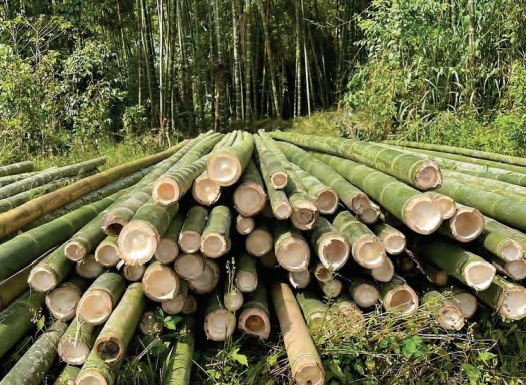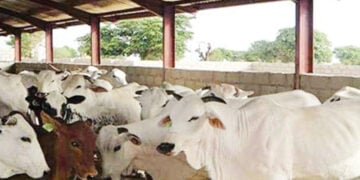As global demand rises for eco-friendly alternatives in construction, furniture-making, and renewable energy, bamboo farming is emerging as a lucrative and sustainable venture. Once overlooked, the fast-growing crop is now earning recognition as “green gold,” drawing interest from investors and farmers alike.
In regions like Ogun, Ondo, and parts of the Southeast, bamboo plantations are expanding rapidly. Thanks to its short maturity period just three to five years and minimal maintenance needs, bamboo presents a viable alternative to traditional timber. Its versatility and environmental benefits are positioning it as a game-changer in Nigeria’s agricultural and green economy sectors.
Industry leaders are betting big on bamboo, describing it as the future of sustainable investment. Its appeal lies not only in its eco-friendly nature but also in its remarkable durability and regenerative qualities. Bamboo can thrive for up to 70 years, continuously replanting itself, making it both a long-term and low-maintenance asset. For farmers, the returns are impressive, once mature, a well-managed plantation can yield over ₦1.6 million per acre annually.
A study by the Raw Materials Research and Development Council (RMRDC) highlights the untapped potential of bamboo in Nigeria. The research revealed that bamboo is widely available across the country and, if properly harnessed for industrial use, could save the nation trillions of naira in foreign exchange by reducing the need for imported raw materials.
Bamboo’s versatility makes it a highly valuable resource across multiple industries. It is widely used in construction for flooring, roofing designs, and scaffolding as well as in furniture production, animal feed, and landscaping. Globally, bamboo farming has proven its potential not just economically, but environmentally. It is also used for erosion control and slope stabilization in vulnerable areas, adding to its appeal as a sustainable solution in both agriculture and land management.
Harvesting
Bamboo yield depends on the variety grown and the farming practices used. Typically, harvesting can begin at six years, with the first harvest producing around nine to ten tonnes per hectare for culms weighing about 10 kg each. Yields generally increase over time, stabilizing at approximately 15 tonnes per hectare after nine years.
Profitability
Naturally, the cost of bamboo rises as it grows. At different stages, you can make money in this business even by selling seedlings. A young tree can produce three to four shoots within two months. During the next season, the mother plant and the young shoots would have brought three to four shoots each.
In about four years, the plant would have produced 80 canes, and 80 canes multiplied by 200 for an acre is 16,000. Assuming a cane goes for N100 each, that means 100×16,000, which is equal to N1,600,000 annually, after four to five years of plantation, and this figure will keep repeating every season.
Of course, the price of bamboo increases with age, and the ones for staking can be harvested in three to four years. However, that of pole and bridge construction has to be left for about six years. You can start a bamboo nursery and sell the seedlings to prospective farmers.
Market Opportunities
There is a huge market for bamboo in the country, and this is because it has inexhaustible uses.
But you can place a market value on it by making artistic materials for sale to institutions, such as chairs, poles, toothpicks, charcoal supply for export, and matches, among others.
Knowledge
Like in any business, and the same with growing bamboo successfully, there is a need for the right training and in-depth knowledge of the processes involved in cultivation and management. Seek the advice of a bamboo farmer with experience.





